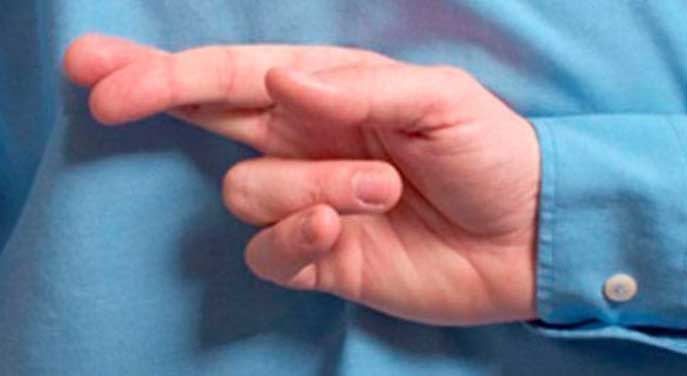 Here are my tips to help in spotting liars at work.
Here are my tips to help in spotting liars at work.
1. Begin with a baseline
Spotting liars begins with observing a person’s baseline behaviour under relaxed or generally stress-free conditions so that you can detect meaningful deviations.
One of the strategies experienced interviewers use is to ask a series of simple questions while observing how the person behaves when there is no reason to lie. Then, when the more difficult issues get addressed, the interviewer can stay alert for sudden changes in behaviour that may indicate deception around key points.
2. Watch for stress signals
For the vast majority of the individuals you work with, the act of lying triggers a heightened stress response: blood pressure, heart rate and breathing rates all increase.
To relieve stress and anxiety, liars may use pacifying gestures (rubbing their hands together, bouncing their heels, fidgeting with jewelry, etc.) But our first response to stress (before we ready ourselves to fight or flee) is to freeze. So also pay attention if your usually animated colleague suddenly stops gesturing, has a forced or frozen smile, and locks her ankles.
3. Look at their eyes
 The biggest myth around deception is that liars can’t look you in the eyes. In fact, some don’t (especially small children), but polished liars may actually give too much eye contact.
The biggest myth around deception is that liars can’t look you in the eyes. In fact, some don’t (especially small children), but polished liars may actually give too much eye contact.
There are two eye signals that are more accurate signs of dishonesty: 1) Pupils dilate when someone is lying, and 2) Blink rates change – slowing down while someone constructs and tells the lie, and then speeding up (sometimes as much as eight times) afterward.
4. Count to four
Nonverbal cues to all kinds of unconscious giveaways tend to occur in clusters – a group of movements, postures and actions that collectively point to a particular state of mind.
This is crucially true of dishonesty, where one specific cluster of nonverbal signals has been proven statistically to accompany dishonesty. These are: hand touching, face touching, crossed arms, and leaning away. According to research conducted at Northeastern University, if you see these “Telltale Four” being displayed together, watch out!
5. Listen – really listen – to what people tell you
Because of the mental effort it takes to tell a bald-faced lie (and because it is so stressful), many people prefer to avoid the truth with selective wording. Notice how the responses below never really answer the question.
Question: Have you ever used drugs?
Answer: I don’t do drugs.
Question: Did you take the computer from the supply room?
Answer: Do I look like the kind of person who would take a computer?
Question: Did you leave your last place of employment on good terms?
Answer: I left to pursue other opportunities.
Please remember that none of these verbal or nonverbal cues are proof of lying. (Truthful people can show signs of stress, have a naturally high blink rate, or give round-about answers.) But they are strong indicators to help spot liars, possible deception, and “hot spots” – areas that you should investigate further.
Troy Media columnist Carol Kinsey Goman, PhD, is an executive coach, consultant, and international keynote speaker at corporate, government, and association events. She is also the author of STAND OUT: How to Build Your Leadership Presence. For interview requests, click here.
The views, opinions and positions expressed by columnists and contributors are the authors’ alone. They do not inherently or expressly reflect the views, opinions and/or positions of our publication.
© Troy Media
Troy Media is an editorial content provider to media outlets and its own hosted community news outlets across Canada.

